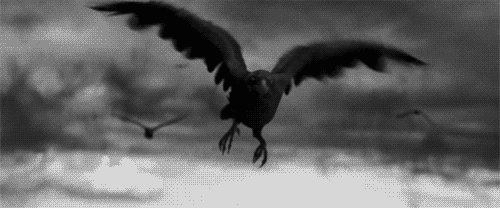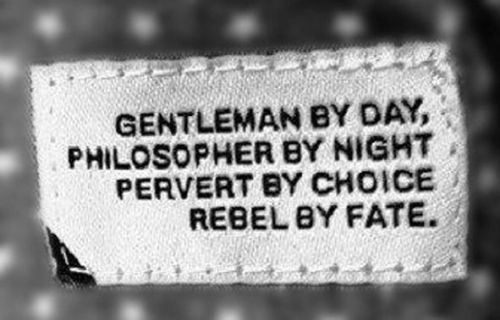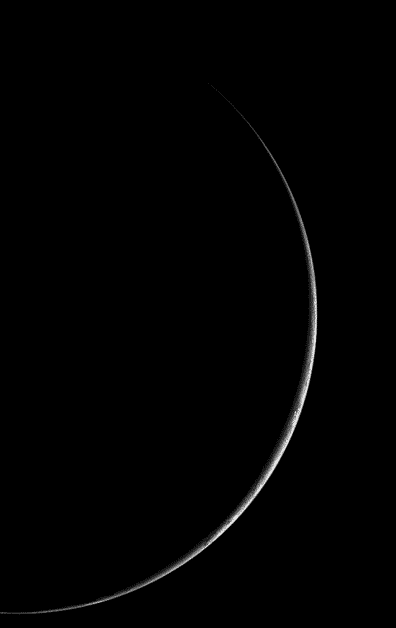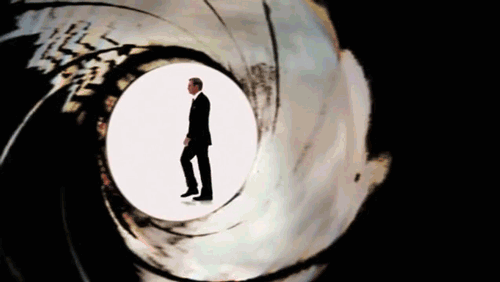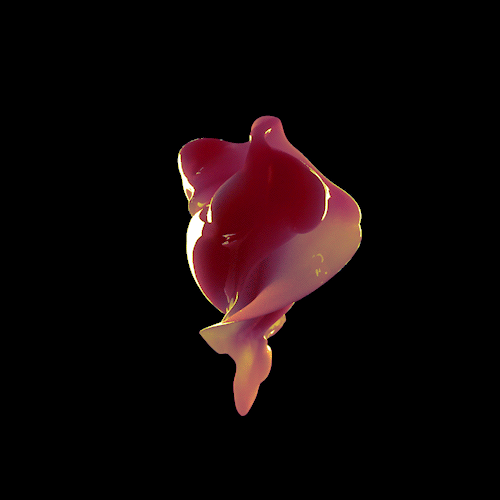Wednesday, March 31, 2010
Tuesday, March 30, 2010
Updates

British actress Rachel Weisz has been linked to a possible role in the upcoming James Bond film, the 23rd in the official series.
Despite the financial situation with MGM keeping production officially on hold, Sam Mendes is understood to be working on planning the movie, although he is performing this duty as 'consultant' rather than director until the studio can fund the film, or until EON can produce under a different banner.
With the first draft script from Neal Purvis, Robert Wade and Peter Morgan complete, thoughts have reportedly turned to casting. This despite the fact that female lead casting for recent films has often been finalized just days ahead of shooting, or in some case, after shooting had actually started.
Cinema Blend claims, via a reputable source, that Rachel Weisz is being considered for a major role in the film. But she would not take on the traditional Bond Girl part, rather the head of the mysterious organization 'Quantum' that have been behind the plots in both of Daniel Craig's two outings as 007 so far.
The site says, "Weisz is actually friends with Daniel Craig (in fact they’re working together on the upcoming movie Dream House) and in the past she had a personal relationship with would-be Bond 23 director Sam Mendes. She has before expressed real interest in doing a Bond movie with Craig. So why not give her something substantive in the movie, something that won’t reduce her to being 007’s latest conquest? Why not let her play the villain? Our source says that’s exactly what they’re discussing behind the scenes of Bond 23. In fact, they’re considering Weisz to play the head of Quantum."
Saturday, March 27, 2010
the Wicker tree (2010)

It's little more than a funky new poster at the moment, but the website for The Wicker Tree, Robin Hardy's "spiritual sequel" to 1974's The Wicker Man, has just gone live, confirming a release date sometime in 2010.
This is the film that used to be Cowboys For Christ. Not sure about that new title although it's obviously less Texas-baiting than its predecessor (the title of Hardy's novel on which the film is based) and makes the connection to Lord Summerisle and co. more obvious. Double-edged sword though, running the risk of non-savvy mallrats immediately writing it off as something to do with "that retarded Nicolas Cage movie".
Hardy's first film for 24 years is, if the novel is an indicator, a close parallel to The Wicker Man, rather than a sequel per se. Each character from 1974 has an equivalent and the plot structure is similar, but the details this time involve an evangelical Texan country singer and her boyfriend attempting to introduce religion to the small Scottish town of Tressock.
Cast-wise, Christopher Lee (who describes The Wicker Tree as "erotic, romantic, comic and horrific enough to loosen the bowels of a bronze statue") is joined by Graham McTavish, Clive Russell, Brittania Nicol and Honeysuckle Weeks. Shooting took place last year in Texas and Scotland, and Hardy showed ten minutes at a screening of The Wicker Man in Tribeca last Hallowe'en. It's been a long time coming, but it's actually happening!
Sunday, March 21, 2010
Wrong is right (1982)

Wrong Is Right (Columbia Pictures, 1982) is a prescient black comedy thriller about the theft of two suitcase bombs, featuring the plot conventions of media bias, government conspiracy, and Islamic terrorism. The film, which starred Sean Connery as superstar TV news reporter Patrick Hale, and directed by Richard Brooks from his own script based on Charles McCarry's novel, The Better Angels, was a commercial and critical failure at the time of its release. Most reviews found the film implausible. British reviews castigated the film for its distributor's attempt to tie it in with James Bond in its advertising scheme and retitling of the film, The Man with the Deadly Lens. In France, where the film was called Meurtres en direct, it was compared negatively to Bertrand Tavernier's La Mort en direct, as did Stanley Kauffmann of The New Republic. The New York Daily News emerged as a champion for the film, Liz Smith calling it "a sleeper not to miss" prior to its release, and Rex Reed and Kathleen Carroll giving it four and three and a half star reviews published a day apart.
The film is also notable for a joke at the end of the movie in which Connery rips off his toupee on camera. Jennifer Jason Leigh has a small role as a girl who is doing a fantasy killing of her parents on national TV (a controversial new recreational activity), and tells Hale that she hopes that her parents are watching, even though she has no particular grudge against them.
Based on Charles McCarry's 1979 novel The Better Angels, Wrong is Right is set in a near future in which violence has become something of a national sport and television news has fallen to tabloid depths (a significantly bigger stretch in 1982, when the film was released.) Star Sean Connery plays Patrick Hale, a globe-trotting reporter with access to a staggering array of world leaders. As the film opens, he has ventured to the Arab country of Hegreb to interview his old acquaintance, King Ibn Awad (Ron Moody). Awad has learned that the President of the United States (George Grizzard) may have issued orders for his removal; as a result, Awad) is apparently making arrangements to deliver two mini-nuclear devices — each about the size of a small suitcase — to a terrorist, with the intention of detonating them in Israel and the United States, unless the President resigns. In the intricate plot that unfolds, nothing is quite the way it seems, and Hale finds himself caught between political leaders, revolutionaries, CIA agents and other figures, trying to get to the bottom of it all.
Saturday, March 20, 2010
12 Monkeys (1995)

12 Monkeys is a 1995 science fiction film directed by Terry Gilliam, inspired by the French short film La Jetée (1962), and starring Bruce Willis, Madeleine Stowe, Brad Pitt, and Christopher Plummer. The film depicts the world in 2035 as devastated by disease, forcing the human population to live underground. Convict James Cole (Willis) "volunteers" for time travel duty to gather information in exchange for prison release. When he first arrives in the past, Cole is arrested and locked up in a psychiatric hospital, where he meets Dr. Kathryn Railly (Stowe), a psychiatrist, and Jeffrey Goines (Pitt), the insane son of a world-renowned virologist.
After Universal Studios acquired the rights to remake La Jetée as a full-length film, David and Janet Peoples were hired to write the script. Under Terry Gilliam's direction, Universal granted the filmmakers a $29.5 million budget, and filming lasted from February to May 1995. The film was shot mostly in Philadelphia and Baltimore, where the story was set.
The film was released to critical praise and grossed approximately $168 million worldwide. Brad Pitt was nominated for the Academy Award for Best Supporting Actor, and won a Golden Globe for his performance. The film also won and was nominated for various categories at the Saturn Awards.
12 Monkeys studies the subjective nature of memories and their effect upon perceptions of reality.
Examples of false memories include:
- Cole's recollection of the airport shooting which is altered each time he has a dream.
- A "mentally divergent" man at the asylum who has false memories.
- Railly telling Cole "I remember you like this" when a barely recognizable Cole and Railly are seen in disguise for the first time.
References to time, time travel and monkeys are scattered throughout the film, including the Woody Woodpecker "Time Tunnel" cartoon playing on the TV in a hotel room, The Marx Brothers movie Monkey Business (1931) on TV in the asylum and the subplots of monkeys (drug testing, news stories and animal rights). The film is also a study of modern civilization's declining efforts to communicate with each other due to the interference of technology.

The genesis of 12 Monkeys came from executive producer Robert Kosberg, who had been a fan of the French short film La Jetée (1962). Kosberg persuaded the film's director, Chris Marker, to let him pitch the project to Universal Pictures, seeing it as a perfect basis for a full-length science fiction film. Universal reluctantly agreed to purchase the remake rights and hired David and Janet Peoples to write the screenplay. Producer Charles Roven chose Terry Gilliam to direct because he believed the filmmaker's style was perfect for 12 Monkeys's nonlinear storyline and time travel subplot. Gilliam had just abandoned a film adaptation of A Tale of Two Cities when he signed to direct 12 Monkeys. The film also represents the second film for which Gilliam did not write or co-write the screenplay. Although he prefers to direct his own scripts, he was captivated by the Peoples' "intriguing and intelligent script. The story is disconcerting. It deals with time, madness and a perception of what the world is or isn't. It is a study of madness and dreams, of death and re-birth, set in a world coming apart."
Universal took longer than expected to green-light 12 Monkeys, although Gilliam had two stars (Bruce Willis and Brad Pitt) and a firm budget of $29.5 million (low for a Hollywood science fiction film). Universal's production of Waterworld (1995) had resulted in various cost overruns. To get 12 Monkeys greenlighted, Gilliam convinced Willis to lower his normal asking price. Because of Universal's strict production incentives and his previous history with the studio on Brazil (1985), Gilliam received the right of final cut privilege. The Writers Guild of America was also skeptical of the "inspired by" credit for La Jetée and Chris Marker.
12 Monkeys is inspired by the French short film La Jetée (1962), notably the story of both protagonists being haunted by the image of their own death. The climaxes for both films also take place in an airport.
Similar to La Jetée, 12 Monkeys also presents Hitchcockian elements and references to Alfred Hitchcock's own Vertigo (1958). Toward the end of the film, Cole and Railly hide in a theater showing a 24 hour Hitchcock marathon and watch a scene of Vertigo. Railly then transforms herself with a blonde wig, as Judy (Kim Novak) transformed herself into blonde Madeleine in Vertigo; James sees her emerge within a red light, as Scottie (James Stewart) saw Judy emerge within a green light.Brief notes of Bernard Herrmann's 1958 film score can also be heard. Railly also wears the same coat Novak wore in the first part of Vertigo. The scene at Muir Woods National Monument, where Judy (posing as Madeleine) looks at the growth rings of a felled redwood and traces back events in her past life, resonates with 12 Monkeys' larger themes. Cole and Railly later have a similar conversation while the same music from Vertigo is repeated. Further on in the film, Cole wakes up in a hospital bed with scientists of the future talking to him in chorus. This is a direct homage to the "Dry Bones" scene in Dennis Potter's The Singing Detective.

Gilliam undertook the same filmmaking style from his own Brazil (1985), including the art direction and cinematography (specifically using fresnel lenses). The interrogation room where Cole is being interviewed by the scientists was based on the work of Lebbeus Woods; these scenes were shot at three different power stations (two in Philadelphia and one in Baltimore). Gilliam intended to show Cole being interviewed through a multi-screen interrogation TV set because he felt the machinery evoked a "nightmarish intervention of technology. You try to see the faces on the screens in front of you, but the real faces and voices are down there and you have these tiny voices in your ear. To me that's the world we live in, the way we communicate these days, through technical devices that pretend to be about communication but may not be."
The art department made sure that the 2035 underground world would only use pre-1996 technology as a means to depict the bleak future. To create the majority of visual effects sequences, Gilliam awarded the shots to Peerless Camera, the London-based effects studio he founded in the late-1970s with visual effects supervisor Kent Houston (The Golden Compass, Casino Royale). Additional digital compositing was done by The Mill, while Cinesite worked on film scanning services.
Tuesday, March 16, 2010
Sunday, March 14, 2010
Silent running (1972)

Silent Running is a 1972 environmentally-themed science fiction film, directed by Douglas Trumbull, who had previously worked as a special effects supervisor on such science fiction films as 2001: A Space Odyssey and The Andromeda Strain.
Silent Running depicts a future in which all plant life on Earth has been made extinct, except for a few specimens preserved in a fleet of space-borne freight ships converted to carry greenhouse domes. When orders come from Earth to jettison and destroy the domes, the botanist aboard the greenhouse-ship 'Valley Forge' (Bruce Dern) rebels, and eventually opts instead to send the last dome into deep space to save the remaining plants and animals.
In an interview with Starlog magazine in the late 1970s, Douglas Trumbull revealed that the plot of the movie in the original version of the script was quite a bit different from what was actually filmed. In the original version, the Space Freighters were on permanent duty, carrying biological domes. When they are finally told to blow the domes and return to earth, it is because the freighters are going to be scrapped.
The Freeman Lowell character in the original version was an older, more curmudgeonly man who simply did not want to return to earth and be forced into retirement, so he steals the Valley Forge, and heads off into deep space. As in the filmed version, he reprograms the robots for some companionship, and the subplot involving the plants dying due to a lack of light was involved, but his main interest in the plants was simply as a means of extending his limited food supplies. In the second half of the film, he receives a signal from an alien ship, and decides to approach it, making humanity's first contact with aliens. The last part of the movie was a race between Lowell, who was trying to contact the aliens, and the human boarding party trying to re-take the ship. Finally, in desperation, Lowell detaches one of the domes with one of the robots aboard seconds before he is killed by the boarding party. The dome drifts off into deep space, where it is found by the aliens.
Trumbull had been involved with creating effects for 2001: A Space Odyssey. Director Stanley Kubrick wanted the "Stargate" sequence of that film to be centered around Saturn, but there were technical difficulties in getting the special effects for this sequence finished in the limited time frame. The Saturn idea was scrapped, and Kubrick substituted Jupiter instead. Trumbull developed the sequence after production, and it was recreated for Saturn in Silent Running.
The interiors were filmed aboard the decommissioned WW2 aircraft carrier USS Valley Forge (CV-45), which was docked at the Long Beach Naval Shipyard in Long Beach, California. Shortly after filming was completed, the carrier was scrapped. The forest environments were originally intended to be filmed in the Mitchell Park Domes in Milwaukee, Wisconsin, but the production budget forced the sequences to be shot in a newly-completed aircraft hangar in Van Nuys, California. Trumbull stated on the commentary accompanying the DVD release that the geodesic domes containing the last forests of Earth's future on the spaceship Valley Forge were based on the Missouri Botanical Garden Climatron dome.

There are three freighters seen in the film, the Valley Forge, the Berkshire and the Sequoia. Five other ships that carried domes are also named, but do not appear on screen — they are the Yellowstone, Acadia, Blue Ridge, Glacier and Mojave. Each ship features a designation on the hull, which notes the area from which some of the flora and fauna samples were taken. The Valley Forge is listed as "Bahia Honda Subtropical," indicating at least some specimens were taken from this area of the Florida Keys.
The model of the Valley Forge Space Freighter was 26 feet (8 m) long, and took six months to build from a combination of custom castings and the contents of approximately 800 prefabricated model aircraft or tank kits. After filming was completed, American Airlines expressed an interest in sending the model on the tour circuit, but this was not feasible due to the fragile nature of the model (in fact, during filming, pieces of the model kept falling away). The ship was subsequently disassembled after several years sitting in Douglas Trumbull's personal storage facility. Several pieces, including the domes, wound up in the hands of collectors. Several domes survive, including one that now rests in the Science Fiction Museum and Hall of Fame in Seattle, Washington, and another which was sold at auction in 2008.
The three "drones" were played by four double-amputees, an idea inspired by Johnny Eck, a sideshow performer of the early 20th century who had been born without lower limbs.[citation needed] The 20 pound (9 kg) "drone suits" were custom tailored for the different actors. The suits still exist, and are in Douglas Trumbull's personal collection.
The soundtrack was written by bassoonist and P.D.Q. Bach creator Peter Schickele. It contains two songs—"Silent Running" and "Rejoice in the Sun"—written by Schickele and Diane Lampert, which were performed by popular folk singer-songwriter Joan Baez. The two songs were issued as a single on Decca (32890). In addition, an LP record (LP-81072) was released on Decca DL7-9188, and was later reissued by Varese Sarabande on green vinyl. In 1998 a limited release on CD by the "Valley Forge Record Groupe" included an additional track with the spoken introduction "God Bless These Gardens"
Dead Again (1991)

Dead Again is a 1991 psychological thriller/neo-noir directed by Kenneth Branagh, starring Branagh and his then-wife Emma Thompson. Andy Garcia, Derek Jacobi and Robin Williams are also featured.
The film begins with opening credits intercut with pans across newspaper clippings about a society murder committed by conductor-composer Roman Strauss. Most of the articles were written by Gray Baker (Andy Garcia), who visited Roman Strauss on the day of his execution. The gates of a mansion in the past fade into the same gates in the present day. As the main narrative begins, we meet Mike Church (Branagh), a smart-alecky Los Angeles private investigator whose jobs usually involve running down deadbeats and finding missing persons. One day he's called in by the priest in charge of the orphanage where Mike was raised, to help identify a woman (Thompson) who showed up at their gates (the same gates as in the black and white scenes in the past) in a state of shock. The woman is unable to speak and seems to have no recollection of who she is or what happened to her.
After making a few inquiries, Mike takes the woman, whom he calls Grace, to stay at his apartment, where he discovers she has a terror of scissors. Over the course of a few days, the two of them uncover clues to her identity, but find nothing concrete; Mike finds himself attracted to Grace and is somewhat protective of her. Grace regains her voice during a hypnotic session with Franklyn (Jacobi), an antique dealer who claims she is having a "past-life" experience. She is made to recall a couple who lived during the 1940s, a famous composer and his pianist wife, as if she were part of their history. Franklyn finds a LIFE magazine identifying the couple as actual people, Roman and Margaret. Margaret was brutally murdered, and Roman was tried and executed for her murder.

As Mike and Grace fall in love, Grace is upset by the similarities of their courtship to that of Roman and Margaret. Grace becomes afraid of Mike and is unconvinced by his assertions that he's "not Roman." Franklyn hypnotizes Mike, leading to the revelation that Mike is not the reincarnation of Roman, but of Margaret. Now, Mike becomes afraid of Grace. Mike consults with Cozy Carlisle (Robin Williams), a disgraced psychiatrist who lost his license due to having sex with female patients. Grace consults with Franklyn; each is advised to kill the other. Meanwhile, Mike's friend at the newspaper, Pete (Wayne Knight), uncovers the true identity of "Grace." She is Amanda Sharpe, an artist. He takes Amanda and Franklyn to her apartment, where she is stunned to discover that she is an artist who is obsessed with scissors, using them in every conceivable way in her art. To make her feel safer, Franklyn gives Amanda an antique gun from his shop.
Mike finds Gray Baker, old and decrepit, at a nursing home. Baker says he no longer thinks Roman killed Margaret, and says that the housekeeper, Inga, would know. After the murder, the housekeeper moved out and opened an antiques shop that is now run by her son, Frankie, a disturbed boy who was a stutterer and kleptomaniac. Thus, Mike comes to believe that Inga killed Margaret. Mike visits Inga, who explains that it was her son, Frankie, who killed Margaret. Inga had always been in love with Roman, after she saved his life while they fled war-torn Europe. After Margaret married Roman, Inga was treated coldly. Gray Baker, who was attracted to Margaret, instilled suspicions in Margaret that Roman had indeed killed his first wife, and that he was having a sexual affair with Inga. But Roman refused to fire Inga, despite Margaret's pleading, which made her more suspicious. Inga was unhappy about her treatment, and told it to her son Frankie one night. Frankie, then still a young boy, killed Margaret with scissors (to her throat), believing that this would solve his mother's problems. After having heard Inga's story, Mike (realizing that Franklyn is in fact Frankie Madison) leaves and races to Amanda's apartment; Frankie in the meantime arrives and kills his mother (Inga by smothering).

A distressed Mike, desperate to save his love from murder at the hands of Frankie once again, breaks into Amanda's apartment. She, carefully prepared by Frankie to believe Mike to be a crazed killer, shoots him as he is trying to explain to her the truth about Roman and Margaret. Then Frankie shows up. Amanda (knowing who he now really is) tries to shoot him but the gun misfires. Frankie (gloating over said jammed gun) slaps Amanda unconscious and prepares to shoot her (in the mouth, so it looks like suicide), but Mike rouses himself from his state of shock following his shooting, and stabs Frankie with the scissors (placed in his hand by Frankie to incriminate him). Pete shows up with a pizza and tries to prevent Mike from what he thinks he's doing — killing Amanda — but he quickly realizes that it is Frankie who intends to do the killing (who now has got hold of Mike's gun). After a brief Mexican standoff, Frankie is stabbed in the back with the scissors (making him discharge all the bullets into the air), by Amanda. Enraged by this, a now totally unhinged Frankie (whose stutter has now returned) removes said scissors, to then lunge at her and Mike with it, but Mike moves a giant sculpture made of scissors directly into his path, Frankie, who cannot stop from colliding into it, is fatally impaled on them. Roman and Margaret kiss, and the scene fills with color as the shot fades to Mike and Grace kissing.
The movie was filmed entirely in color. After test screenings, it was decided to use black and white for the "past" sequences to help clear up audience confusion. The final frame, once the mystery is solved, fades from black and white to color.
The negative of the final frame was flipped to match the present day lovers to the doomed 1940s newlyweds they embodied; i.e., Margaret dissolves into Mike, and Roman dissolves into Grace.
When the audience first meets Mike Church, he's seated in his car, which is parked on the wrong side of the street. While most people believe this is because Kenneth Branagh is from the United Kingdom (where cars are driven on the left-hand side of the road), it is actually because behind him are a number of skyscrapers that he, as the director, wanted included in the background.
In addition to the dual roles played by Kenneth Branagh and Emma Thompson, actress Jo Anderson and the film's composer Patrick Doyle both play small dual parts, appearing in the present-day and 1940s sequences.
Branagh has said that at the time he made this film (and still, to some extent) he was very interested in the technique of uninterrupted takes, and several can be seen throughout the movie. Also note sequences such as the first hypnosis sequence at the Laughing Duke, which features an extremely complicated camera shot in 360 degrees, which involved a great deal of precise timing and technical faculty. Branagh noted that this relatively short scene was shot perhaps fifteen times, taking all day.
According to the director's commentary on the DVD edition of the movie, the film has numerous in-jokes. For instance, a date seen in one of the newspaper clippings is actually Branagh's birthday, and Roman Strauss' prisoner number is the date of the Battle of Agincourt (Branagh's previous film, which had just launched his career at the time he undertook Dead Again, was Henry V).
Saturday, March 13, 2010
Friday, March 12, 2010
Bigger than life (1956)

Bigger Than Life is an American film made in 1956 directed by Nicholas Ray and starring James Mason, who also co-wrote and produced the film, about a school teacher and family man whose life spins out of control upon becoming addicted to cortisone. The film co-stars Barbara Rush as his wife and Walter Matthau as his closest friend, a fellow teacher. Though it was a box-office flop upon its initial release, many modern critics hail it as a masterpiece and a brilliant indictment of the conformist 1950s suburbia.

Schoolteacher and family man Ed Avery, who has been suffering bouts of severe pain and even blackouts, is hospitalized with what's diagnosed as a rare inflammation of the arteries. Told by doctors that he probably has only months to live, Ed agrees to an experimental treatment: doses of the hormone cortisone.
Ed makes a remarkable recovery. He returns home to his wife, Lou, and their son, Richie. He must keep taking cortisone tablets regularly to prevent a recurrence of his illness. But the 'miracle' cure turns into a nightmare as Ed starts to misuse the tablets, causing him to experience wild mood swings and, ultimately, a psychotic episode which threatens the safety of his family.

Bigger Than Life was extremely controversial upon its release. It's attack on the nuclear family was considered shocking for the time, and it was not a financial success, however the film was extremely popular with the critics at the Caheirs du cinema, and Jean-Luc Godard named it one of his Top 10 favorite movies.
Monday, March 08, 2010
Sunday, March 07, 2010
Anastasia (1956)

Anastasia is a 1956 20th Century Fox historical drama film directed by Anatole Litvak. The film stars Ingrid Bergman, Yul Brynner, and Helen Hayes. Supporting players include Akim Tamiroff (who earlier worked with Ingrid Bergman in the film For Whom the Bell Tolls) and Martita Hunt (who provides comic relief as a fluttering lady-in-waiting).
The film tells the story of a young, confused woman in 1920s France (Ingrid Bergman), who is picked up and influenced by a group of Russian expatriates, led by Yul Brynner, into passing herself off as Grand Duchess Anastasia Nikolaevna of Russia, the daughter of the murdered Tsar Nicholas II of Russia. However, the ultimate test for her is to convince the Dowager Empress, Maria Feodorovna (Helen Hayes), of her authenticity.
The movie was adapted by Guy Bolton and Arthur Laurents from the play by Marcelle Maurette. The structure of the play can still be detected in the static settings and theatrical "scenes" of the cinematic version, which has additional, essentially decorative ball scenes. It was directed by Anatole Litvak.
The film marked Bergman's return to Hollywood after several years working with her then-husband, Roberto Rossellini, in Italy. Anastasia won her an Academy Award for Best Actress, the second of three Oscars she would receive. The musical score from the film was also nominated for an Academy Award for Original Music Score and was popular after the film's release.
The secret cameo - part 2
In previous post HITCH IN DRAG? on October 29, 2008 I reported about a so called secret cameo of Alred Hitchock. In "North by Northwest" there is a short sequence onboard the train (approximately 44 minutes into the film) where an old lady has her ticket checked by a pair of rail guards, after a brief (unheard) exchange of words, the guards move on and the lugubrious lady half turns to the camera and gives a slightly comical shrug of the shoulders.
Hitchcock had already made an obvious cameo near the start of the film. With that out of the way, did he decide to play one of his many practical jokes by slipping into a blue dress to make a second cameo in drag?


Although the lady does indeed bear more than a passing resemblance to Hitchcock, the role was actually played by renowned character actress Jesslyn Fax. Fax had previously appeared in Rear Window and Suspicion and would go on to appear in several episodes of Alfred Hitchcock Presents and The Alfred Hitchcock Hour.
The following picture shows her in Alfred Hitchcock Presents episode "Four O'Clock", which was filmed a couple of years before "North by Northwest".

Friday, March 05, 2010
Subscribe to:
Comments (Atom)













